Bottle Gourd Cultivation Guide:
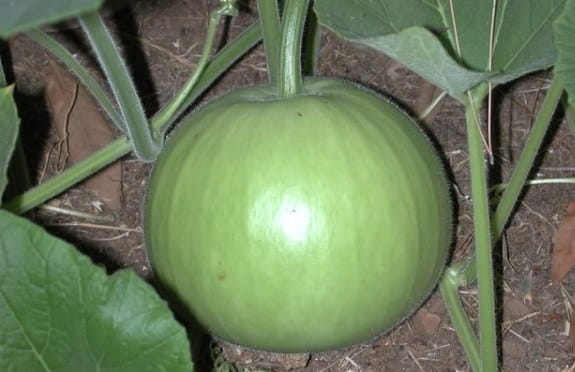
Introduction of Bottle Gourd Cultivation:- Bottle gourd is one of the popular vegetable crops cultivated in south East Asia. This vegetable is extensively grown in India and fruits are available throughout the year. Bottle gourd plant is a vigorous, annual and climbing vine with large leaves and a lush appearance. Bottle gourd usually comes to harvesting in 3 months and its flowers are solitary, chalky white in colour and open at night. Bottle gourd fruits are fleshy and vary in shape and size. The name “bottle gourd” is due to its bottle like shape. Bottle gourd belongs to the family of “Cucurbitaceae” and genus of “Lagenaria”. Bottle gourd is also known as “calabash” and “lauki”. Bottle gourd is originated from tropical Africa and spread across the world. Bottle gourd vegetables at early (tender) stage are used in cooking’s for preparing various dishes. Mature fruits are used as water jugs, domestic utensils, floats for fishing nets. The big advantage of this crop is, bottle gourd will start flowering 2 months after sowing. Though, this crop is cultivated under rainfed conditions, one can plan for multiple crops throughout the year provided there is enough irrigation facility. Bottle gourd leaves also have some good medicinal properties and a decoction made out of leaf is used for curing jaundice. One can get decent profits from commercial cultivation of bottle gourd with proper crop management practices.
Health Benefits of Bottle Gourd:- The following are some of the health benefits of Bottle Gourd.
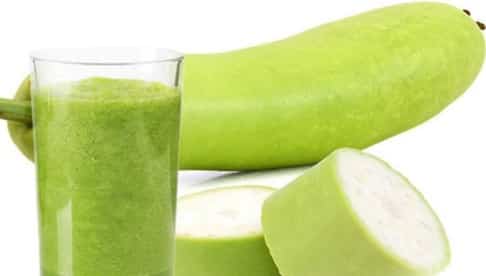
- Bottle gourd is good for digestion.
- Bottle gourd has cooling properties.
- Bottle gourd is good for diabetic patients.
- Bottle gourd juice helps in weight management.
- Bottle gourd helps in reducing the blood sugar levels.
- Bottle gourd helps inflammations in the liver and kidneys.
- Bottle gourd helps to reduce the constipation.
- Bottle gourd is good remedy for the insomnia.
- Bottle gourd is good remedy for urinary infections.
Local Names of Bottle Gourd in Other Parts of the World:- Flaschenkürbis (German), Lauki (Urdu),Κολοκύθι δοχείου (Greek), Holibyeongbag (Korean), Lauka (Nepali), botella de calabaza (Spanish),زجاجة القرع (Arabic), Бутилка кратуна (Bulgarian), 葫芦瓶 (Chinese), upo (Filipino),Lagenaria siceraria (Italian), น้ำเต้า (Thai),bầu (Vietnamese), 夕顔 (Japanese), Tigva vasului (Romanian), දිය ලබු,, Diyalabu (Sinhalese, Sri lanka), ឃ្លោក (Cambodian), Gourde (French),sukabağı (Turkish), Pokok Labu Parang (Malay), کدو بطری (Persian).
Local Names of Bottle Gourd in India:- Bottle Gourd (English), Ghia / Lauki (Hindi), Sorekai / Chorakkai (Tamil), Sorekai, ചുരക്ക (Malayalam), Sorakaya / Anapa Kaya (Telugu), Sorekai (Kannada), Lau (Bengali), Dudhi (Gujarati), Gardudde / Boblen (Konkani), Pandharabhopla / Dudya Bhopal, Laau (Bengali), Doodhi Bhopla (Marathi), Lau (Oriaya), Ghia Da Sag (Punjabi), Turae (Tulu), Zeeth (Kashmiri), Khongdrum (Manipuri), lau (Oriya), Lau (Assamese).
Bottle Gourd Varieties:- There are many varieties locally developed for commercial purpose. It is better to find out the high yielding seed variety in your local area. Information about commercial varieties of bottle gourd can be obtained from any local horticulture department or agriculture department or agriculture universities Choosing the quality and disease resistant seed will check many pests and diseases .
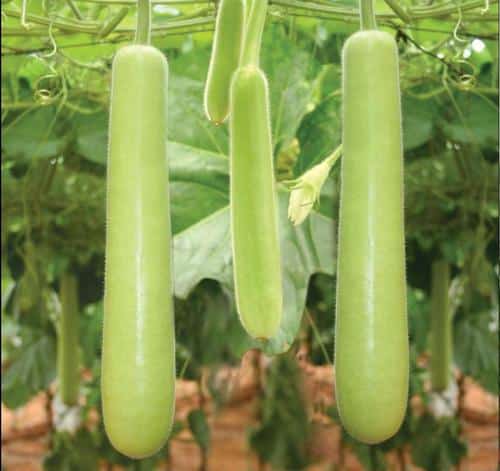
Climate Required for Bottle Gourd Cultivation:- Bottle gourd thrives best in hot and moist climatic conditions. This crop tolerates cool climate better than musk melon and water melon. However, bottle gourd cannot tolerate frost.
Soil Requirement for Bottle Gourd Cultivation:- Bottle gourd can be cultivated on wide range of soils. However, sandy loamy soils rich in organic matter with good drainage are best suited for high quality and yield. If you are planning large scale production of bottle gourd, it is better to go for soil test. The optimum soil pH in bottle gourd cultivation is from 6.5 to 8.0. Bottle gourd crop is quite suitable for river bed cultivation because of its deep tap root system which supports vines for a longer period.
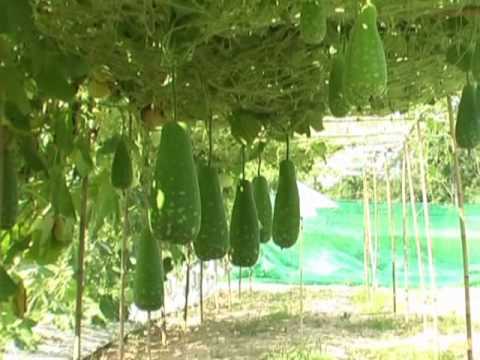
Season for Bottle Gourd Cultivation:- Usually in south East Asia, this is grown as summer and rainy season crop. However, bottle gourd can be grown throughout the year if there is enough irrigation facility.
Land Preparation in Bottle Gourd Cultivation:- The land should be brought to fine tilth stage by thoroughly ploughing. It can be achieved by giving five to six ploughings. Any weeds from previous vegetable crops should be removed. Any deficiency of micro-nutrients in the soil should be covered. To make the soil rich in organic matter, apply 20 to 25 tonnes of well-decomposed farmyard manure (FMY) during the field preparation.
Propagation, Seed Rate and Sowing in Bottle Gourd Cultivation:- Propagation is done by seeds. Seed rate depends on soil type and variety. Generally on an average, seed rate of 3 to 6 kg is required to cover the 1 hectare land. For improving germination, should be soaked for 24 hours in water for better germination .The layout used should be ring and basin. The seeds should be sown directly in the field by dibbling method at distance of 2 meter to 3 meter X 1.0 meter to 1.5 meter. Generally 3 to 4 seeds are sown in a pit at 3.0 cm depth. To prevent from any soil borne disease or seed borne disease, treat the seeds with Carbendazim 2 grams/kg of seeds before sowing in the field.
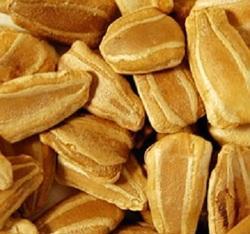
Nursery Raising in Bottle Gourd Cultivation:- In hi-tech horticulture, plant 2 weeks old healthy seedlings of bottle gourd raised in shade net houses. Raise the seedlings in portrays having 98 cells or in polythene bags. Transplant about 2 week old seedlings in the main field.
Manures and Fertilizers in Bottle Gourd Cultivation:- Application well-decomposed farmyard manure (FMY) of 25 tonnes/ha as basal dose along with along with half dose of ‘N’ of 35 kg and full doses of P2O5 of 25 kg and K2O of 25 kg is good enough to cover the manure and fertilizer requirement in bottle gourd cultivation. The remaining dose of ‘N’ of 35 kg should be applied in several split doses at fortnightly intervals.
Irrigation should be given just before dibbling the seeds in the field and thereafter once a week. However, if it is summer crop, frequent irrigation is needed and there is no need of irrigation in rainy season. Make sure to drain out excess water from the field.
Intercultural Operations in Bottle Gourd Cultivation:- Weeds can be controlled by giving 2 or 3 hoeings during initial stage of plant growth. Weedicides can be used to check the weeds as well. Bottle gourd is very responsive to manures and fertilizers and one can follow similar kind of fertilizer and inter-cultural operations as that of bitter gourd farming or ash gourd farming. Erect pandals when the plants start vining. Carry out weeding and raking of the soil at the time of fertilizer application. Earthing up should be carried during rainy season.
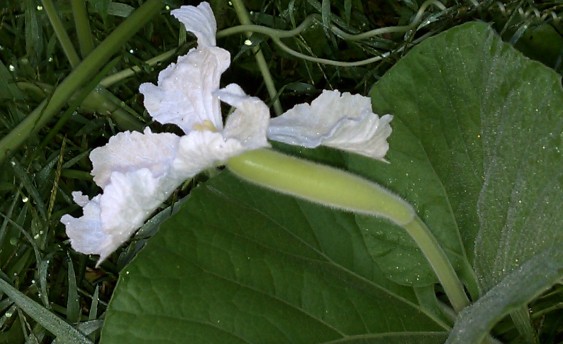
Training and Pruning in Bottle Gourd Cultivation:- Proper training and pruning is needed in bottle gourd farming as it will have good vegetative growth. Training bottle gourd plants on bamboo like sticks (bowers) will make plant roots to expose and tap more sunlight. Axillary buds of vines should be removed till vines reach the bowers height and when vine reaches bower height, apical bud should be removed at 10 to 15 cm below bower to allow 2 to 3 branches to spread on bower. After formation of 4 to 5 fruits, vines should be pruned again allowing 2 to 3 axillary buds only to grow on primary vines. Remove any yellow and pale coloured older leaves near bottom portion.
Pests and Diseases in Bottle Gourd Cultivation:- The following are the common pests and diseases found in bottle gourd cultivation.
- Fruit fly: Apply carbaryl 10 % DP in pit before sowing of seeds to destroy the pupae. In homestead gardens the fruits may be covered with polythene, cloth or paper bags to ensure mechanical protection. In large gardens apply carbaryl 20 to 25 grams or malathion 30 to 40 ml in 15 liters of water containing sugar at fortnightly intervals at flowering and fruit initiation. Spray as coarse droplets on the ventral surface of leaves. Remove and destroy affected and decayed fruits.
- Epilachna Beetle: Remove and destroy egg masses, grubs and adults occurring on leaves. Spray carbary 20 to 25 grams per 15 liter of water.
- Red Pumpkin Beetle: Adult beetle eats the leaves, makes hole on foliage and causes damage on roots and leaves. Incorporate carbaryl 10% DP in pits. before sowing the seeds to destroy grubs and pupae.
- Plant Lice: Apply 2 % fish oil soap. First dissolve soap in hot water and then make up the volume.
- Downy Mildew: It is severe during rainy season. This can be prevented by spraying mancozeb 50 grams in 15 liter of water.
- Powdery Mildew: This disease can be controlled by spraying combination of Mancozeb and carbendazim 35 grams per 15 liters of water.
Harvesting in Bottle Gourd Cultivation:- The fruits should be harvested when they are still green and tender. Sharp knife can be used to cut the fruits from the vine. Delay in harvesting causes the fruit to become hard. Harvesting should be done only after 10 days (at least) of insecticide / fungicide application. The fruits should be washed thoroughly in water before sending to local markets.
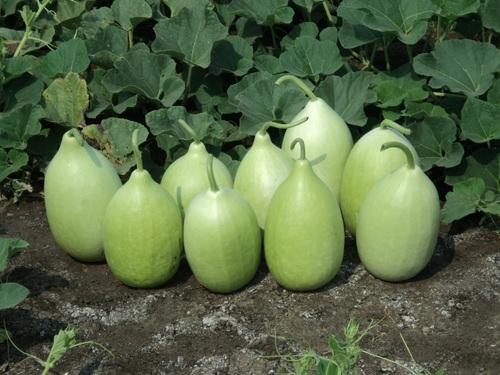
Yield in Bottle Gourd Cultivation:- Yield depends on the cultivar, soil type and irrigation. However, an average yield of 100 to 120 quintals/ha can be achieved with good field management practices.
For Sheep and Goat Farming : Read here.
For Indian Agriculture : Read Here
